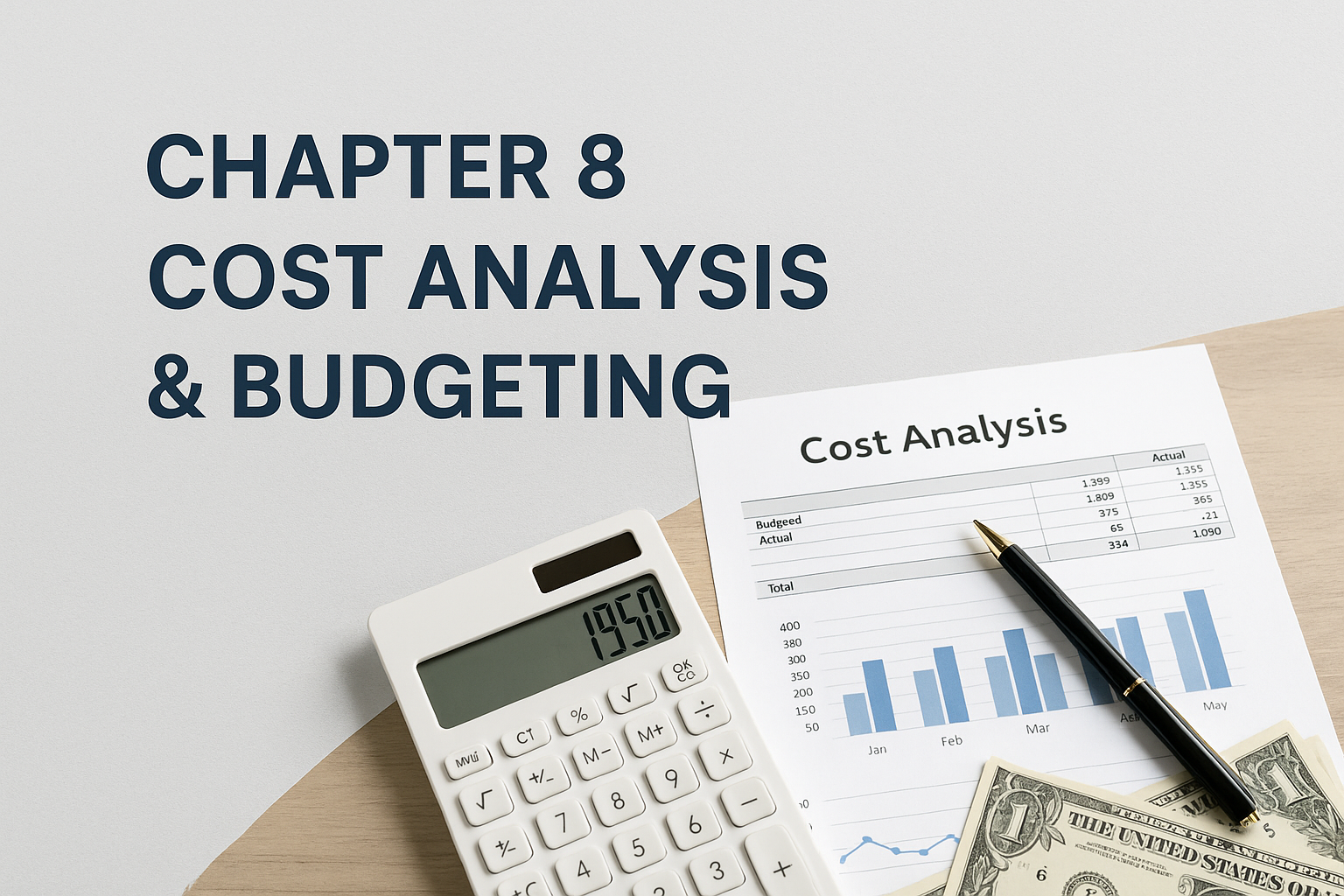
Chapter 8: Cost Analysis & Budgeting

Chapter 8: Cost Analysis & Budgeting
8.1 Cost Tracking Templates
Efficient cost management starts with clear, structured templates for recording all manufacturing expenses—raw materials, labor, overhead, and other operational costs. Excel can be used to break down costs by batch, shift, line, or department, giving you instant visibility on where your money goes and whether you’re staying within budget.
Example: Build a table with columns for Date, Category (materials, labor), Item, Quantity, Unit Cost, and Total Cost. Use formulas to auto-calculate totals as new data is entered.
8.2 Conducting Break-Even Analysis
Understand when your operations become profitable by calculating break-even points. Use Excel to input fixed costs, variable costs per unit, and unit selling price—then create formulas to determine the production volume at which revenue covers total costs. Visualize this with simple charts for better management buy-in.
Tip: Use =Fixed Costs/(Selling Price per Unit - Variable Cost per Unit) to find your break-even quantity automatically.
8.3 Budget Forecasting Tools
Excel’s forecasting tools (like the Forecast Sheet and Data Tables) allow you to project future expenses, revenues, or resource needs based on historical data or industry benchmarks. Apply scenario analysis (best, average, worst case) to prepare for budget variances and optimize your financial planning.
Best Practice: Use Data Tables to quickly see how changes in cost or sales volume affect your overall budget and profitability.
Demo Example:
Using Excel to Compare Actual vs. Budgeted Costs
- Set up a table with columns for Item, Budgeted Cost, Actual Cost, and Variance.
- Use a simple formula:
=Actual - Budgetedto measure variance for each item. - Apply Conditional Formatting to highlight items with significant over- or under-spending.
- Insert a bar chart to visually compare budgeted versus actual costs by department or project.

